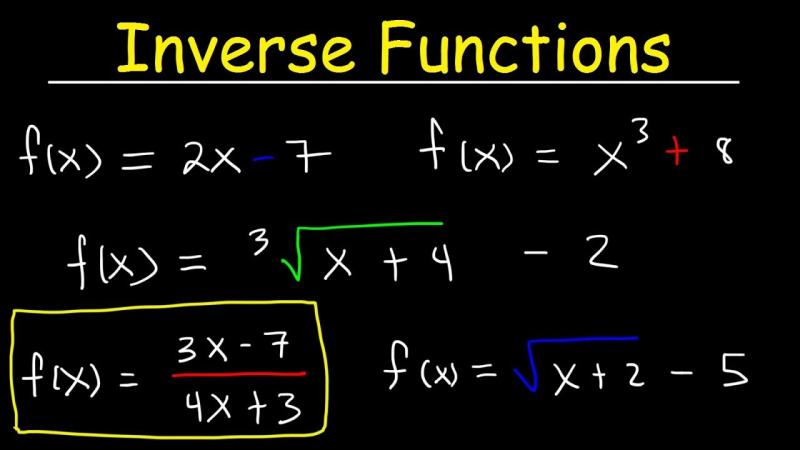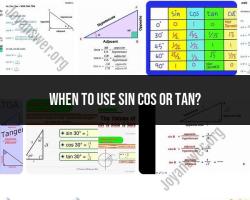How do you calculate the inverse of a function?
Calculating the inverse of a function involves finding a new function that undoes the action of the original function. The inverse function "undoes" the process of the original function, and when composed together, they result in the identity function. Here are the steps to calculate the inverse of a function:
1. Understand the Notation:
- Let be the original function. The inverse function is denoted as .
2. Replace with :
- Replace with in the original function. The expression becomes .
3. Swap and :
- Swap the roles of and , turning the equation into .
4. Solve for :
- Solve the new equation for . The result is the inverse function .
5. Verify the Inverse:
- Check that the composition and . In other words, make sure that applying the original function and then its inverse (or vice versa) results in the identity function.
Example:
Let's find the inverse of the function .
Replace with :
Swap and :
Solve for :
Verify the Inverse:
- Let , the inverse of .
So, is the inverse function of .
Keep in mind that not all functions have inverses, and for a function to have an inverse, it must be one-to-one (each input corresponds to a unique output). Additionally, the domain and range of the original function may need to be restricted for the inverse to exist.
Methods for calculating the inverse of a function?
There are several methods for calculating the inverse of a function, each with its own advantages and limitations. Here are some of the most common methods:
1. Algebraic Method:
This method involves solving the equation for y in terms of x. This can be done by isolating y and manipulating the equation algebraically. This method is straightforward when the function is simple, but it can become complex for more complicated functions.
Example:
Find the inverse of the function f(x) = 2x + 1.
Solution:
- Swap x and y: y = 2x + 1
- Solve for y: y - 1 = 2x
- Divide both sides by 2: x/2 = (y - 1)/2
- Swap x and y again: f^(-1)(y) = y/2 - 1/2
2. Graphical Method:
This method involves reflecting the function across the y = x line. The reflected image represents the inverse function. This method is quick and visual, but it may not be accurate for complex functions or functions with multiple branches.
Example:
Find the inverse of the function y = x^2.
Solution:
- Reflect the graph of y = x^2 across the y = x line.
- The reflected graph represents the inverse function, y = sqrt(x).
3. Numerical Methods:
This method involves using numerical algorithms to approximate the inverse function. These algorithms can be iterative, meaning they repeatedly refine an initial guess until a desired level of accuracy is reached. This method is useful for complex functions or functions that cannot be easily inverted algebraically.
Examples:
- Newton-Raphson method
- Bisection method
4. Symbolic Computation Software:
Several computer software programs, such as Mathematica and Maple, can symbolically compute the inverse of a function. This is a convenient and accurate method for most functions, but it requires access to the software.
Choosing the Right Method:
The best method for calculating the inverse of a function depends on several factors, including:
- The complexity of the function: Simple functions may be easily inverted algebraically, while complex functions may require numerical methods or software.
- The desired level of accuracy: Numerical methods can provide high accuracy, while algebraic or graphical methods may be less accurate.
- The available resources: Some methods require specialized software, while others can be done by hand or with basic tools.
It's important to choose the method that best suits your specific needs and circumstances.













